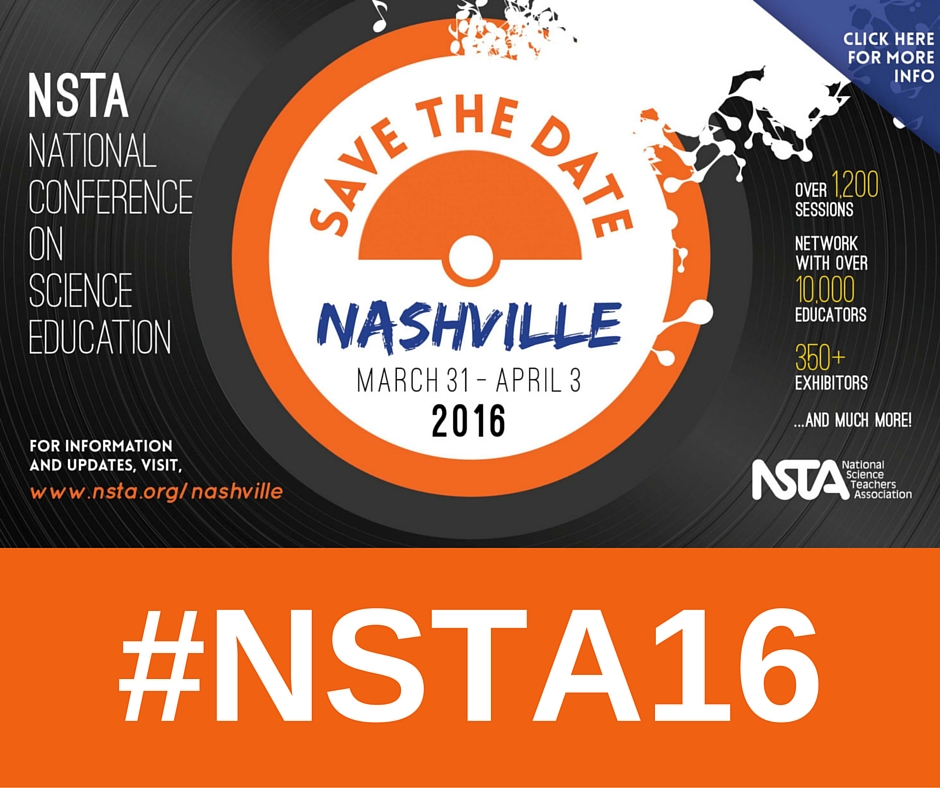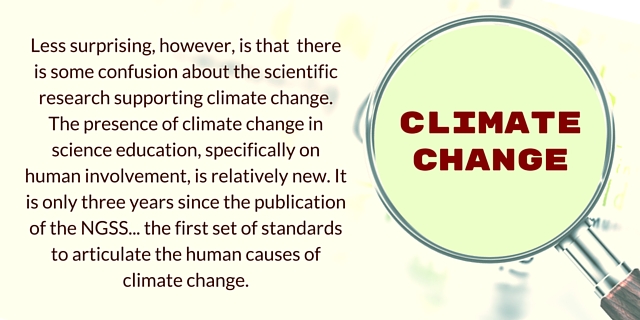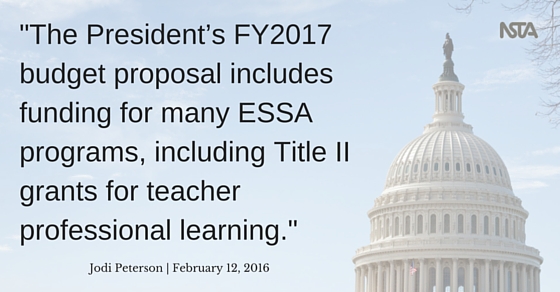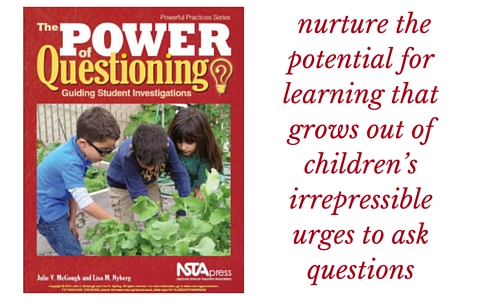Connecting with families
By Peggy Ashbrook
Posted on 2016-02-21
 I write a weekly note home to the families to accompany some photos for families to look at together and reflect on the week’s explorations with their preschool child. Sending a note home to families is part of an early childhood program’s way to strengthen the home-school connection to support families’ important work as part of the educational team. Science and Children editor Linda Froschaur cautions us to “Don’t Forget Families” and describes the benefits revealed by research about parent/family involvement, in her Editor’s Note in the February 2012 issue. Not surprisingly, student achievement, graduation rates and enrollment in post secondary education go up.
I write a weekly note home to the families to accompany some photos for families to look at together and reflect on the week’s explorations with their preschool child. Sending a note home to families is part of an early childhood program’s way to strengthen the home-school connection to support families’ important work as part of the educational team. Science and Children editor Linda Froschaur cautions us to “Don’t Forget Families” and describes the benefits revealed by research about parent/family involvement, in her Editor’s Note in the February 2012 issue. Not surprisingly, student achievement, graduation rates and enrollment in post secondary education go up.
The National Association for the Education of Young Children (NAEYC) recognizes the importance of connecting with families by making some articles from the journal, Young Children, free to all, such as, “What Parents Have to Teach Us About Their Dual Language Children” by Sara Michael-Luna in the November 2015 issue, Volume 70 No 5.
 Additional articles, such as, “The Gifts of the Stranger: Learning From Others’ Differences” by Susan Bernheimer and Elizabeth Jones in the September 2013 Young Children, support early childhood educators in embracing the increasing ethnic diversity of our population, or other changes in our educational community. A family-teacher book club is another idea described in an article in Young Children. If the length of a book is daunting, perhaps the discussion group could focus on articles from Science and Children.
Additional articles, such as, “The Gifts of the Stranger: Learning From Others’ Differences” by Susan Bernheimer and Elizabeth Jones in the September 2013 Young Children, support early childhood educators in embracing the increasing ethnic diversity of our population, or other changes in our educational community. A family-teacher book club is another idea described in an article in Young Children. If the length of a book is daunting, perhaps the discussion group could focus on articles from Science and Children.
NAEYC also has a section of its website called “For Families,” with articles about child development, math, music, science, writing and reading. Read my article (for families and educators), “Turn Any Walk into a Nature Walk,” for ideas on exploring nature on a walk anywhere, including around a city block. The bonding, listening and other skills and knowledge learned while singing with an adult are some of the same skills that allow children to build understanding of science content. Such learning begins in infancy as Cathy Fink and Marcy Marxer describe in “10 Ways Babies Learn When We Sing To Them!”
In “Families Learning Together: An elementary STEM-focused event brings students and families together” (Science and Children July 2015, Vol. 52 No. 9), Sarah MacDonald and Matthew Maurer describe how to use a Family STEM Night (Science, Technology, Engineering, Math) to show families how STEM can be fun and exciting for K–4 students. Through the use of hands-on science and engineering activities integrated with content from separate disciplines, families were given the opportunity to work alongside and support their children’s learning.

 In my experience with parents of preschoolers, seeing their child learning science content through hands-on experiences, and reflecting on them, makes an impression and supports their understanding that science learning is for everyone. If their 4-year-old can explore the electromagnetic spectrum (use flashlights to learn about light), then they will succeed, and should enroll, in science classes in high school.
In my experience with parents of preschoolers, seeing their child learning science content through hands-on experiences, and reflecting on them, makes an impression and supports their understanding that science learning is for everyone. If their 4-year-old can explore the electromagnetic spectrum (use flashlights to learn about light), then they will succeed, and should enroll, in science classes in high school.
 I write a weekly note home to the families to accompany some photos for families to look at together and reflect on the week’s explorations with their preschool child. Sending a note home to families is part of an early childhood program’s way to strengthen the home-school connection to support families’ important work as part of the educational team.
I write a weekly note home to the families to accompany some photos for families to look at together and reflect on the week’s explorations with their preschool child. Sending a note home to families is part of an early childhood program’s way to strengthen the home-school connection to support families’ important work as part of the educational team.
Teacher Professional Learning: Transforming Teacher Practice
By Guest Blogger
Posted on 2016-02-19
Several weeks ago the National Academies on Science (NAS) released a report that the National Science Teachers Association (NSTA) believes should be required reading for every school administrator.
Science Teachers’ Learning: Enhancing Opportunities, Creating Supportive Contexts focuses on enhancing teacher practice through professional learning situated within the context of their schools and districts. The report provides practical recommendations and lays out the supportive environment and professional learning experiences teachers need and which are critical to the enactment and application of the three-dimensional teaching and learning found in the K–12 Framework for Science Education and the Next Generation Science Standards.
In my January 25 blog post, I outlined a few of the key areas where it is critically important that teachers receive support as they move toward a new vision of teaching and learning, and provided suggestions on how NSTA can help.
This post will focus on the NAS report in the context of teacher resources and experiences, and why continued and sustained professional learning is so important. My thoughts and recommendations are drawn not only from the national academy report, but also from the Council of State Science Supervisors (CSSS) work on professional learning standards for science educators.
Teacher Resources and Experiences
As stated in the National Academy report, resources and experiences should be contextually relevant, focused on the specific students served by the school district, and as teachers implement these new resources and strategies, their practice should be informed by multiple data to guide future iteration and application as educators hone their knowledge and skills. Examples of data and content for analysis include student work, student surveys and interviews, teacher observations, review and discussion of pedagogical videos demonstrating pedagogical strategies in situ, etc. Ultimately, educators need repeated opportunities working with local district and school-based teams to plan, implement, and reflect upon these strategies as they enacted in their classrooms—critical tenants expressed within the report’s recommendations.
Teacher Professional Learning
In order for teachers to acquire this knowledge and skill, it is insufficient to merely have an understanding of science content knowledge (disciplinary core ideas of science). They need experience in the pedagogical practice of three-dimensional teaching, such as planning and conducting investigations, developing and using models, engaging in argument from evidence, and eliciting/interpreting student understanding through formative assessment to inform science instruction. An emphasis for all should include professional learning experiences in understanding engineering practices. Teachers need to engage firsthand in the ongoing learning and application of three-dimensional learning themselves beyond one-and-done, isolated experiences.
This is accomplished through the following strategies for blended professional learning that combine online and onsite experiences into multi-year, sequenced growth opportunities:
- Sustain personalized professional growth over time (long duration) to permit application, reflection, and iteration, and discussion with school-level educator teams over time and multiple years. Employ a variety of methods that promote educator collaboration within workshops, school-based teams, and in geographically dispersed digital networks. Develop roles for teacher growth to be recognized and serve as mentors or coaches to sustain professional learning and build local leadership capacity.
- Incorporate a degree of teacher autonomy in determining how the professional learning will occur, tapping the intrinsic motivation and personalized professional learning for individual teachers, and bounded within the mandates and initiatives of the school and district. To the degree appropriate, top-down one-size fits all approaches should not be the sole method of support. Differentiation for teachers drawing from their knowledge, experience, and skills treats them as professionals and builds collegial trust and ownership, as they adapt materials for their own use and local context rather than simply implementing for fidelity from external experts.
- Extend onsite professional learning with moderated online follow-up to enhance face-to-face experiences. Recognize and integrate online teacher activity when collaborating face-to-face and vice versa to create a coherent experience, avoiding a bolt-on, separate and isolated, click-next, home alone activity. Affordances in online networks provide immediacy, convenience, and access to colleagues, experts, and resources that may otherwise not be available. Examples include sharing how implemented strategies work with student artifacts and assessment data; reviewing, aggregating, and adapting instructional materials against established criteria (NSTA/Achieve EQUiP rubric), reviewing and discussing videos of pedagogical practice, etc.
The content of this post cannot do justice to the breadth and worth of strategies and scaffolding school and district leaders should consider as they alter the policy, time, structures, and resources science teachers need to growth across their professional career. I will highlight two recommendations in the report that clearly identify the role NSTA plays in the landscape of science education, that of partnerships and the use of educational technology to support local based efforts. The National Academy report states: “Professional learning can be enhanced through partnerships with teachers and their professional networks and…districts should consider the use of technology and online spaces/resources to support teacher learning in science.”
NSTA formally collaborates with over 180 districts and universities across the country, helping them implement their strategic goals and course offerings in support of NGSS and STEM, both at the in-service and pre-service levels, respectively. Our NSTA Learning Center platform may be configured to enhance local onsite efforts with private cohorts and administrator dashboards to help document teacher growth as they create and complete long term professional growth plans catering to their unique needs and district and school strategic plans.
If you’d like to learn more about the partnerships or products listed above, please feel free to contact me at abyers@nsta.org or 703-312-9294, or Flavio Mendez, Senior Director of the NSTA Learning Center
at fmendez@nsta.org or 703-312-9250.
 Al Byers, Ph.D., is the Associate Executive Director, Services for the National Science Teachers Association
Al Byers, Ph.D., is the Associate Executive Director, Services for the National Science Teachers Association
Editor’s Note
This post was updated on February 29, 2016, to include a link to the professional learning standards, published by CSSS.
The mission of NSTA is to promote excellence and innovation in science teaching and learning for all.
Future NSTA Conferences
2016 National Conference
NGSS Workshops
2016 STEM Forum & Expo
2016 Area Conferences
Follow NSTA
Several weeks ago the National Academies on Science (NAS) released a report that the National Science Teachers Association (NSTA) believes should be required reading for every school administrator.
Focus on STEM at #NSTA16 Nashville, March 31-April 3
By Korei Martin
Posted on 2016-02-16
Science, Technology, Engineering, and Math (STEM) is becoming a mainstay in schools around the world, and 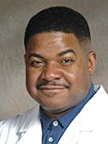 the same will be true this spring at the NSTA National Conference in Nashville, March 31–April 3. There will be over 150 STEM-focused sessions, and three of the 13 featured speakers have detailed backgrounds in STEM and will be discussing STEM in their presentations. Our keynote speaker Grand Hank has the Grand Hank STEM Road Show Tour which exposes students across the United States to career opportunities in the area of STEM and energy. In 2012 he broke a Guinness World Record at our conference, and we expect no less excitement from him this year. Don’t miss Grand Hank’s keynote presentation, “Energize Science,” on March 31 in grand ballroom B/C at 9:15 AM.
the same will be true this spring at the NSTA National Conference in Nashville, March 31–April 3. There will be over 150 STEM-focused sessions, and three of the 13 featured speakers have detailed backgrounds in STEM and will be discussing STEM in their presentations. Our keynote speaker Grand Hank has the Grand Hank STEM Road Show Tour which exposes students across the United States to career opportunities in the area of STEM and energy. In 2012 he broke a Guinness World Record at our conference, and we expect no less excitement from him this year. Don’t miss Grand Hank’s keynote presentation, “Energize Science,” on March 31 in grand ballroom B/C at 9:15 AM.
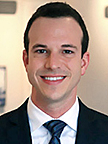 J. Wesley Hall, Director of the Tennessee STEM Innovation Network will be holding a panel titled, “It Takes a Village: A Panel on Partnerships from Multiple Perspectives.” This session emphasizes the need for schools and systems to reach out to the larger community for assistance when incorporating STEM into your curriculum or program. J. Wesley Hall will host a Q&A session with Aimee Kennedy, Vice President for Education, Philanthropy, and STEM Learning; Oliver “Buzz” Thomas, President, Great Schools Partnership; and James P. McIntyre, Jr., Superintendent, Knox County Schools. The featured panel will take place in room 102 A/B on March 31 2:00 PM.
J. Wesley Hall, Director of the Tennessee STEM Innovation Network will be holding a panel titled, “It Takes a Village: A Panel on Partnerships from Multiple Perspectives.” This session emphasizes the need for schools and systems to reach out to the larger community for assistance when incorporating STEM into your curriculum or program. J. Wesley Hall will host a Q&A session with Aimee Kennedy, Vice President for Education, Philanthropy, and STEM Learning; Oliver “Buzz” Thomas, President, Great Schools Partnership; and James P. McIntyre, Jr., Superintendent, Knox County Schools. The featured panel will take place in room 102 A/B on March 31 2:00 PM.
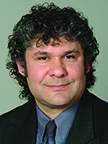 Jeff Goldstein’s “Arthur C. Clarke Institute for Space Education Lecture: Thoughts on Science Education, Science, and Personal Beliefs” will be centered on the vital role in the science and STEM classroom of inquiry- and evidence-based conceptual understanding at an emotional level and its connections to both science and one’s personal beliefs. The goal of the session is to provide a thought-provoking experience for all teachers of science and STEM. This session will take place on Saturday, April 2 at 2:00 PM in Grand Ballroom C2.
Jeff Goldstein’s “Arthur C. Clarke Institute for Space Education Lecture: Thoughts on Science Education, Science, and Personal Beliefs” will be centered on the vital role in the science and STEM classroom of inquiry- and evidence-based conceptual understanding at an emotional level and its connections to both science and one’s personal beliefs. The goal of the session is to provide a thought-provoking experience for all teachers of science and STEM. This session will take place on Saturday, April 2 at 2:00 PM in Grand Ballroom C2.
The NSTA National Conference will also provide educational field trips for attendees at an extra cost. The Welcome to My Classroom is a program sponsored by the International Advisory Board is hosting two different field trips focused on STEM. Both trips are centered on exposing international participants to STEM classrooms. One trip will take participants to Hattie Cotton STEM Magnet Elementary School and the other to Stratford STEM Magnet High School, both of which are located in Nashville Tennessee.
Once you’re signed up, consider coming as a team so we can give you and your district’s team members a personalized learning experience. If you come as a team, you’ll speed through an on-site express registration, network at an exclusive welcome reception, attend customized sessions that focus your STEM implementation efforts (including a district team planning session for teams to share their learning experiences at the conference and discuss how it may be implemented back in their district and keep your team on track). Learn more here (there is no extra charge for this concierge service, but it is limited to 100 teams).
No matter what kind of STEM experience you’re looking for, the NSTA National Conference will have what you need. Whether it’s a high energy hip hop session with Grand Hank or an example of a STEM classroom, there’s something for everyone!
The mission of NSTA is to promote excellence and innovation in science teaching and learning for all.
Future NSTA Conferences
2016 National Conference
2016 STEM Forum & Expo
2016 Area Conferences
Follow NSTA
Survey Reveals Challenges with Teaching Climate Change
By David Evans, NSTA Executive Director
Posted on 2016-02-12
This week, researchers at The Pennsylvania State University released the results of a nationwide survey of middle and high school science teachers on the teaching of climate change that tells us two things: first, we need to reach more teachers with quality resources about climate change and second, schools of education need to do a better job to prepare our future teachers in this area.
The survey results, published in Science Magazine on Feb 11 (Climate confusion among U.S. teachers), highlight challenges that surround the teaching of this important science subject. The survey was conducted among 5,000 middle and high school science teachers from 1,500 public schools across the country in the 2014-15 school year.
The survey found that 3 of 4 science teachers, (70% of middle-school science teachers and 87% of high school biology teachers) allocate at least an hour to discussing global warming in their formal lesson plans. By itself this is an interesting finding; why would biology class be the place teach climate science and what other important topic would be considered as being “taught with only one hour of instruction per year?
When asked to select a statement the closest one to own their views on global warming:
- 68% of teachers selected “global warming is caused mostly by human activities”
- 16% of teachers selected “global warming is caused mostly by natural changes in the environment”
- 11% selected “both”
- 3% of teachers selected “I don’t know”
- 2% of teachers selected “global warming is not happening”
But, the survey also found that
- 30% of teachers emphasize that recent global warming “is likely due to natural causes.”
- 31% said they “send explicitly contradictory messages, emphasizing both the scientific consensus that recent global warming is due to human activity and that many scientists believe recent increases in temperature are due to natural causes.”
- Only 30% of middle school and 45% of high school science teachers knew that the vast majority of scientists ( 81-100 percent) think global warming is caused primarily by humans.
I am encouraged that the majority of teachers (68%) identified with the statement “global warming is caused mostly by human activities.” The fact that more teachers know the correct science than know the percent of scientists holding that view is good news. Teachers are going top the literature to learn for themselves rather than depending on the views of “experts,” regardless of how numerous they might be. Less surprising, however, is that there is some confusion about the scientific research supporting climate change. The presence of climate change in science education, specifically on human involvement, is relatively new. It is only three years since the publication of the Next Generation Science Standards (NGSS) and implementation is just beginning. NGSS is the first set of standards to articulate the human causes of climate change. As the Penn State study notes, “advances in climate science and consolidation of scientific consensus have outpaced textbooks and teachers’ training.” The average science teacher has been out of school for about twenty years. It goes on to say that fewer than half of the teachers report receiving formal instruction in climate science in college, and two-third of teachers said they would be interested in continuing education “entirely focused on climate change.”
Our job as teachers is to prepare students to be educated consumers of science and make informed decisions about the world around us. This report makes it clear that science teachers need more and better professional development to build stronger content knowledge and confidence so they are better prepared to teach students this important science with its with its profound social implications. We know that teachers want to learn more about climate science– at our professional learning conferences last year, the sessions with climate scientists sharing their research with teachers was standing room only. NSTA also has multiple online resources, mostly free, that teachers can use to learn about climate change.
The 2012 National Research Council published A Framework for K-12 Science Education outlines a broad set of expectations for all K-12 students in science and engineering. The Framework, written by scientists and educators, provides a sound, evidence-based foundation for the NGSS that is grounded in both scientific and education research. The NGSS include the study of climate change supporting Earth and Space Science Performance Expectations in both middle school and high school. One of the relevant disciplinary core ideas is stated as:
ESS3.D: Global Climate Change Human activities, such as the release of greenhouse gases from burning fossil fuels, are major factors in the current rise in Earth’s mean surface temperature (global warming).
Adopting and implementing the NGSS is very much a work in progress. States are engaged in deliberative processes to revise their science standards and once they do, teachers need professional development to adjust their practices. The fact that many teachers themselves are not clear on climate science should not be a surprise; what is encouraging is the number of teachers who are learning the science and are trying to present it to their students, beyond the older standards.
Science teachers need our support as they continually improve their science content knowledge and their teaching skills. And science students and teachers need our support by adopting and implementing the best science standards – those that include the human causes of climate change. (Even if that science isn’t always popular with lawmakers and special interest groups.)
Dr. David L. Evans is the Executive Director of the National Science Teachers Association (NSTA). Reach him at devans@nsta.org or via Twitter @devans_NSTA.
The mission of NSTA is to promote excellence and innovation in science teaching and learning for all.
What can you do now to learn more about Climate Science? Join NSTA, in collaboration with the National Oceanic and Atmospheric Administration (NOAA), for the Climate Science in the Classroom virtual conference that will feature climate scientists and education specialists who will share both their knowledge about climate science as well as classroom-ready resources that educators can use with their students.
Follow NSTA
President Obama Releases FY2017 Budget
By Jodi Peterson
Posted on 2016-02-12
President Obama released the Administration’s FY2017 budget request this week, including mandatory spending of $4 billion for the opportunity to “give every student from preschool to high school the opportunity to learn hands-on computer science (CS).”
The President’s budget provides $69.4 billion in discretionary funding for the Department of Education, a 2 percent increase over the 2016 appropriation. The budget also includes $139.7 billion in new mandatory funding over the next decade. (Mandatory funding—not a popular concept with CH Republicans who want to shrink the government – requires that additional funding for proposed programs would be offset through revenue enhancements such as taxes, fees, cost reductions, and other levies proposed elsewhere in the budget.)
In addition to the proposed $4 billion in mandatory funds, the new Computer Science for All program would support provide $100 million in discretionary grants for a competitive state initiative to fund innovative strategies to provide high-quality instruction and other learning opportunities in computer science.
Funding Requests for Programs Authorized Under Every Student Succeeds Act (ESSA)
The request for Title I grants was $15.4 billion, an increase of $450 million above the enacted level. Many education advocates publicly worried that this amount would provide less funding for school improvement, however, since the new federal education law, the Every Student Succeeds Act (ESSA) requires states to set aside a portion of Title I funding for school improvement.
The request for ESSA Title II (Preparing, Training, and Recruiting High Quality Teachers and Principals Grants) is $2.25 billion. This major state formula grants program provides funds to each state to increase student achievement and close achievement gaps and to improve the effectiveness of teachers and school leaders. Funding for STEM education and educators is available under this grant.
The president requested $500 million for the new ESSA Title IV Part A block grant (Student Support and Academic Enrichment Grants, which also provides funding for STEM activities), considerably less than the $1.6 billion authorized in the new federal education law. The president’s budget proposal would allocate these grants to states by formula and then districts would have the option of competing for the funds. ESSA requires that the money would be allocated states and districts by formula.
The Administration requested $10 million in new funding for the national STEM Master Teacher Corps, one of the specific “national activities” authorized under ESSA.
Funding for 2017 was $180 million (up from $60 million to FY2016) for the Education Innovation and Research program, the successor to the Investing in Innovation (i3) program.
21st Century Community Learning Centers funding request was $1.0 billion (a loss of $166.7 million from FY 2016), to support locally-based out-of-school learning and enrichment activities.
In addition to the Computer Science For All program, the President’s budget this year includes requested funding for a number of programs not authorized under the ESSA, including
- A new RESPECT: Best Job in the World program that would make a $1 billion mandatory investment to support a nationwide effort to attract and retain effective teachers in high-need schools.
- $125 million for the proposed Teacher and Principal Pathways program for grants to institutions of higher education and nonprofit organizations to create or expand high-quality pathways into the teaching profession, particularly into high-needs schools and high-need subjects such as science, technology, engineering and math (STEM)
- $10 million for Teach to Lead grantsto build on the promising work at the Department’s “Teach to Lead” gatherings
- $120 million for new “Stronger Together” grants that would help districts implement voluntary, community-developed plans to promote integration.
- $80 million to help launch Next Generation High Schools “that will be laboratories for cutting-edge STEM teaching and learning.” Next Generation High Schools was in the president’s budget proposal last year as well.
National Science Foundation programs
The President’s request for the National Science Foundation would increase NSF’s discretionary spending by about $100 million, to $7.6 billion. The NSF’s Education and Human Resources Directorate funding is proposed at $952.86 million, an increase of $72.86 million or 8.3% over FY 2016. $53.99 million of this proposed increase is in the form of mandatory spending. The request for Advancing Informal Science Learning was $62.5 million (same as FY 2016, $7.5 million of this total would be mandatory funding.); STEM+Computer Science Partnerships Program request was $51.88 million (same as FY 2016, $30.64 million of this amount would be mandatory spending) and the President requested $60.89 million (same as FY 2016) for the Robert Noyce Teacher Scholarships.
Read the WH STEM Fact Sheet.
Jodi Peterson is Assistant Executive Director of Legislative Affairs for the National Science Teachers Association (NSTA) and Chair of the STEM Education Coalition. e-mail Peterson at jpeterson@nsta.org; follow her on Twitter at @stemedadvocate.
The mission of NSTA is to promote excellence and innovation in science teaching and learning for all.
Follow NSTA
Addressing misconceptions
By Mary Bigelow
Posted on 2016-02-11
 My upper elementary students have had very little formal science instruction. I’m finding that they have a lot of “knowledge” that consists of misconceptions, half-truths, and opinions. I’m looking for suggestions on how to deal with these misconceptions. –P., Minnesota
My upper elementary students have had very little formal science instruction. I’m finding that they have a lot of “knowledge” that consists of misconceptions, half-truths, and opinions. I’m looking for suggestions on how to deal with these misconceptions. –P., Minnesota
Along with their notebooks and pencils, students often bring misconceptions to science class. It’s hard to tell how students get these muddled ideas: from their friends, parents, cultural superstitions, television, movies, or other sources. Perhaps they hear only part of an explanation and invent the rest.
If learning involves building on our current understanding, then finding out what students know, don’t know, or think they know is important at the start of a unit. A written pretest might help, but students may have memorized some facts or definitions without really understanding a concept.
I recommend Page Keeley’s series of books Uncovering Student Ideas in Science. The “probes” in these books are brief activities that help identify students’ preconceptions or misconceptions about a topic. For each probe there is a summary of the topic, a detailed description of what can be learned from the students’ responses, teaching suggestions, and a list of resources on the topic. These probes are in the form of questions or activities that could also serve as engaging activities (or “hooks”) at the beginning of a unit. There are several volumes in the series, each with 25+ probes covering a wide variety of topics. (If you would like to preview what these probes look like, NSTA’s Science & Children publishes one in each issue.)
Simply asking students to discuss or write about what they know can be eye-opening, too. I would ask my seventh graders to make a quick list of 10 animals. Without looking at their lists, I predicted that most, if not all, of the animals would be vertebrates, and most of those would be mammals. (My students assumed I had ESP!) When we debriefed on why so many mammals, their immediate response was the misconception that mammals were the most common kind of animal. When we looked up that fact, they were shocked to see there are hundreds of thousands of species of invertebrates. We then had a lively discussion of why we overlook invertebrates in our culture, as an introduction to the unit.
Simply telling students their ideas are wrong won’t help them learn the correct ones.
For example, even though students may recognize that the earth’s axis is tilted, they may not see the connection between this tilt, the seasons, and the length of daylight time we have. They may cling to the misconception that the Earth is closer to the sun in the summer.
“From Misconceptions to Conceptual Change” in the April 2011 issue of The Science Teacher (TST) provides insights into how students develop misconceptions and how teachers can help students change their thinking. The sentence that stood out for me was “…the brain files new data by making connections to existing information. If this new information does not fit the learner’s established pattern of thinking, it is refashioned to fit the existing pattern.” So misconceptions can actually become stronger and more resistant to change, if all we do is present the correct facts. Some common misconceptions include “the scientific method” (implying that all scientists use a single problem-solving strategy) and the idea that all hypotheses become theories and all theories eventually become laws. The authors include a list of other misconceptions and strategies for overcoming them.
So what can a teacher do to help students connect new information that corrects rather than reinforces misconceptions? “Active Learning Strategies: The Top 10” in the same issue of TST has some suggestions. None of the strategies requires special materials or hours of professional development (e.g., using discrepant events to awaken curiosity, using concept maps, writing to learn). One that stood out for me was “demystify diagrams.” Some diagrams, while trying to explain or summarize information, actually contribute to misconceptions for students. Every year, I had to contend with the misconception that the blood in our veins is blue. Textbooks often show diagrams of the circulatory system with the veins colored blue. Another strategy is using vocabulary correctly (e.g., a hypothesis is not an educated guess).
It may take a while for students to have their ‘aha’ moments, but it is exciting to see the light bulbs go off in their heads!
 My upper elementary students have had very little formal science instruction. I’m finding that they have a lot of “knowledge” that consists of misconceptions, half-truths, and opinions. I’m looking for suggestions on how to deal with these misconceptions. –P., Minnesota
My upper elementary students have had very little formal science instruction. I’m finding that they have a lot of “knowledge” that consists of misconceptions, half-truths, and opinions. I’m looking for suggestions on how to deal with these misconceptions. –P., Minnesota
The Power of Developing Questioning Strategies in the Science Classroom
By Guest Blogger
Posted on 2016-02-10
As authors of the popular NSTA Press book The Power of Questioning: Guiding Student Investigations, we get a lot of questions from readers. One of the top questions we get is, “What types of questions do I need to ask and when should I ask them?” Not only is this a frequently asked question it’s also an important one to start with. Here’s what we tell science teachers: Questions serve many purposes. They help students connect concepts, think critically, and explore concepts at a deeper level. They can help teachers check for understanding and uncover student misconceptions. Questions can be used to clarify and to probe. Questions can extend students’ thinking by requiring the students to justify their answers. Most important, questions involve students in the learning and cause the students to continue thinking and making questions even after the initial discussion ends.
Teachers can ask several types of questions. Two main question types are convergent and divergent. To check for understanding, the teacher asks a convergent question with one specific answer. To open up and expand the discussion to many possible responses, the teacher asks a divergent question with many possible answers. The questions define the focus of the learning. A discussion with only convergent questions feels like a game show, but a discussion with only divergent questions lacks direction. Discussions become dynamic when a blend of different types of questions is thoughtfully used. When deciding the types of questions to ask, ask yourself these questions:
- What do you want to know?
- How do you want your students to get involved in the learning?
To learn more about ways to optimize questioning in your classroom, read this sample chapter from our book: Why Does Skill in Questioning Engage Students in Purposeful Standards-Based Learning? And, of course, feel free to ask us questions!
Julie V. McGough is a first-grade teacher/mentor at Valley Oak Elementary in Clovis, California; mrmagoojulie2@att.net.
Lisa M. Nyberg is a professor at California State University in Fresno, California; lnyberg@csufresno.edu; @docnyberg.
Mastering Scientific Practices With Technology
By sstuckey
Posted on 2016-02-04
In this video, columnist Ben Smith shares information from the Science 2.0 column, “Mastering Scientific Practices With Technology,” that appeared in a recent issue of The Science Teacher. Read the article here.
In this video, columnist Ben Smith shares information from the Science 2.0 column, “Mastering Scientific Practices With Technology,” that appeared in a recent issue of The Science Teacher. Read the article here.
Adding More STEM to the School Day
By Debra Shapiro
Posted on 2016-02-02

Middle school students dissect a frog as part of a hands-on lesson from Science from
Scientists, an in-school enrichment program in Massachusetts and California. (Photo by Arturo Martinez)
Schools seeking to enhance students’ learning of science, technology, engineering, and math (STEM) are adopting in-school STEM enrichment programs that reach student populations in need of additional learning opportunities, connect students with scientists, and/or provide more challenging curriculum. One such program, Science from Scientists (SfS), was established in 2002 “to help teachers with challenges in presenting science content,” says Erika Ebbel Angle, SfS founder and executive director. “Some teachers may have taken only one science course, or [find that] students need more science for test preparation,” she observes. “Teachers have told us that the only way to reach all of their students is through an in-school program.”
SfS offers an In-School Module-Based STEM enrichment program that brings two scientists to grades 4–8 classrooms every other week during the school year “to work with teachers and bring content [that supports] the NGSS [Next Generation Science Standards] and MCAS [Massachusetts Comprehensive Assessment System],” explains Angle. Teachers can choose from more than 85 hands-on STEM lessons, and the scientists “bring the necessary materials with them.”
The program aims “to inspire students and improve both attitudes and aptitudes,” she notes. The scientists conduct “pre- and post-assessments every other week” to chart students’ progress, she relates.
“The program succeeds because teachers see us as a great resource to bolster their curriculum and let students interact with scientists as role models,” Angle contends. While SfS “isn’t genderspecific,” it exposes boys and girls to female role models, she notes.
SfS has been adopted by 46 schools in Massachusetts and California, and “many districts seek us out,” she notes. Assessments have shown that “SfS raises standardized test scores by an average of 25% in our partner schools,” she reports.
SfS is provided free to public schools during the first two years. (Privateschools must pay for the entire program.) During year three, public schools start bearing the program’s costs. SfS “can help schools get grants and offers fundraising ideas,” says Angle. The goal for year four is “to have the program be self-funded in districts where we have relationships,” she explains, but SfS can help with funding if a district isn’t able to cover all the costs. “If we have classroom teachers who want us, we are committed,” she maintains.
An Import From Israel
“Twelve years ago, we were looking for out-of-the-box-type science improvement programs for Jewish day schools in the United States,” recalls Judy Lebovits, vice president and director of the Center for Initiatives in Jewish Education (CIJE). CIJE connected with the Israel Center for Excellence through Education to bring the Excellence 2000 (E2K) program to Jewish schools in the United States. Aimed at highly motivated math and science students, the program also has been adopted by several U.S. public schools and implemented in 77 schools nationwide, she reports.
E2K’s 24 modules involve “teaching totally hands-on, cultivating personal excellence, fostering creativity, and learning how to learn,” and appeal to “students who…like to tinker,” she contends. Each module starts with a story and a problem to solve, then students begin to experiment. “The kids come up with the formula on their own…They can take the answer and apply it to other situations,” she observes.
Carmel Academy in Greenwich, Connecticut, uses E2K with gifted sixth and seventh graders. Grades 6–8 science teacher and E2K coach Rhonda Ginsberg says the program “is a chance for students to do pure science” and design their own experiments. Last year, students designed and tested insulation for a polar bear’s cave, for example.
Often E2K students “bring back what they’ve learned to the regular science class,” and Ginsberg says she has “moved some of the E2K material into the regular science class.”
E2K students compete in national and international competitions and have won 10 awards, which “has created excitement around science,” she relates. They compete online with students from 25 other schools in a competition held in Israel. “The scientists in Israel were blown away at how fast my kids answered the questions,” she reports.
Not all gifted students are admitted to E2K. Ginsberg evaluates fifth-grade candidates, meeting with their science and math teachers to determine their “thinking ability,” she explains. Her biggest challenge is “how to say no to a kid who isn’t yet there analytically and to [his or her] parents. It’s tough.”
Kindergarten Enrichment
When the Batavia, Illinois, Public Schools downsized kindergarten classes from full-day to half-day, some parents complained. Seeking a solution, the district contacted the Batavia Park District, which supervises the area’s parks and recreation facilities and activities. The Batavia Park District designed an enrichment program, now in its fourth year, to extend the school day to six-and-a-half hours for kindergarteners whose parents were willing to pay for it. “About one-third of [area] kindergarteners are enrolled in our program,” says Sarah Schneider, kindergarten enrichment teacher for the Batavia Park District.
The program runs in each of the school district’s six elementary schools, with its own classroom and teacher. “In half-day kindergarten, the kids are only able to do core literacy and math; there’s not a lot of time for science and social studies,” Schneider observes. “We have a solid science program to get kids interested in science early on.
“We have a Delta Education [science] curriculum consisting of six different lessons: oceans, trees, insects and spiders, weather, body and senses, and health and nutrition…[S]ome of us also study the rainforest, arctic animals, space, pumpkins, and basic chemical mixtures,” she explains. “[We chose the curriculum] because we didn’t want to teach the same topics taught by the [school district’s teachers] in preschool,” she relates.
“Our kids are very well prepared for first grade because they’re in school for a full day and getting extra content,” she reports. “We don’t worry about [test] scores; we just make sure students are engaged, growing, and getting something positive out of it.” Without the testing, “we’re able to hold smaller classes with more creative projects.”
Schneider notes there is a trend in some districts to return to all-day kindergarten, which would mean the end of the enrichment program. She believes this could be a real loss for students because district teachers “won’t have the flexibility that we do.”
This article originally appeared in the February 2016 issue of NSTA Reports, the member newspaper of the National Science Teachers Association. Each month, NSTA members receive NSTA Reports featuring news on science education, the association, and more. Not a member? Learn how NSTA can help you become the best science teacher you can be.
The mission of NSTA is to promote excellence and innovation in science teaching and learning for all.
Follow NSTA
Prepare Your Students for the August 21 Solar Eclipse with Solar Science
By Carole Hayward
Posted on 2016-02-02
Great extras accompany this book, including safety glasses for viewing the eclipse and an Observer’s Guide to the All-American Total Solar Eclipse.
“On Monday, August 21, 2017, a total eclipse of the Sun will be visible in the continental United States for the first time in almost 40 years. A total eclipse is when the Sun is completely hidden by the Moon, the sky becomes dark, and the Sun’s faint atmosphere (corona) becomes visible—looking like a beautiful halo. This total eclipse will only be visible on a narrow track stretching across the United States from Oregon to South Carolina. No other country will get to see the total eclipse this time.”
To help prepare middle schoolers for an optimum experience of this wondrous event, NSTA Press has published a great resource: Solar Science: Exploring Sunspots, Seasons, Eclipses, and More. This curriculum resource is written specifically to align with the three-dimensional (3D) learning encouraged by the Next Generation Science Standards (NGSS). Its learning experiences engage students in using real data to learn solar science and effectively integrate the Disciplinary Core Ideas (DCIs), Science Practices (SPs), and Crosscutting Concepts (CCC) associated with solar astronomy at the middle school level.
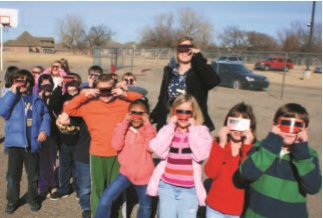 Authors Dennis Schatz and Andrew Fraknoi are award-winning experts in astronomy and science education. Schatz is the Senior Advisor at the Pacific Science Center, and Andrew Fraknoi is the Chair of the Astronomy Department at Foothill College. Both authors regularly lead local and national professional development sessions for teachers at many different levels.
Authors Dennis Schatz and Andrew Fraknoi are award-winning experts in astronomy and science education. Schatz is the Senior Advisor at the Pacific Science Center, and Andrew Fraknoi is the Chair of the Astronomy Department at Foothill College. Both authors regularly lead local and national professional development sessions for teachers at many different levels.
They paired up to write this book because they know there will be tremendous interest in the eclipse and that teachers will want to prepare their students to understand relevant science topics the year before and the year after.
The 45 classroom-tested, hands-on, inquiry-based activities are organized into four sections
- Understanding and Tracking the Daily Motion of the Sun: What does the Sun do in the sky each day, and how does that relate to our notions of time and direction?
- Understanding and Tracking the Annual Motion of the Sun and the Seasons: How does the Sun’s motion and position in the sky vary throughout the year, and how does that relate to our ideas of a calendar and the seasons?
- Solar Activity and Space Weather: What phenomena do we observe on the surface and in the atmosphere of the Sun, and how do these influence what we observe and how we live our lives on Earth?
- The Sun, the Moon, and the Earth Together: Phases, Eclipses, and More: How do the relationships among the Earth, the Moon, and the Sun produce solar and lunar eclipses?
Ideally suited for teachers, informal science educators, youth group leaders, curriculum specialists, and teacher trainers, these versatile activities can be used one at a time, as the basis of a stand-alone unit on the Sun, or as a comprehensive curriculum.
Whether or not you buy a copy of Solar Science, you can download a free observing guide for the upcoming solar eclipse to share with students and their families as well as community partners. This eight-page guide includes everything you need to know regarding where and when to see the eclipse, how to observe the eclipse safely, and how to understand and explain what causes it.
NSTA Press has developed many online extras, including downloadable worksheets and charts to accompany lessons. This book is also available as an e-book.
Great extras accompany this book, including safety glasses for viewing the eclipse and an Observer’s Guide to the All-American Total Solar Eclipse.



